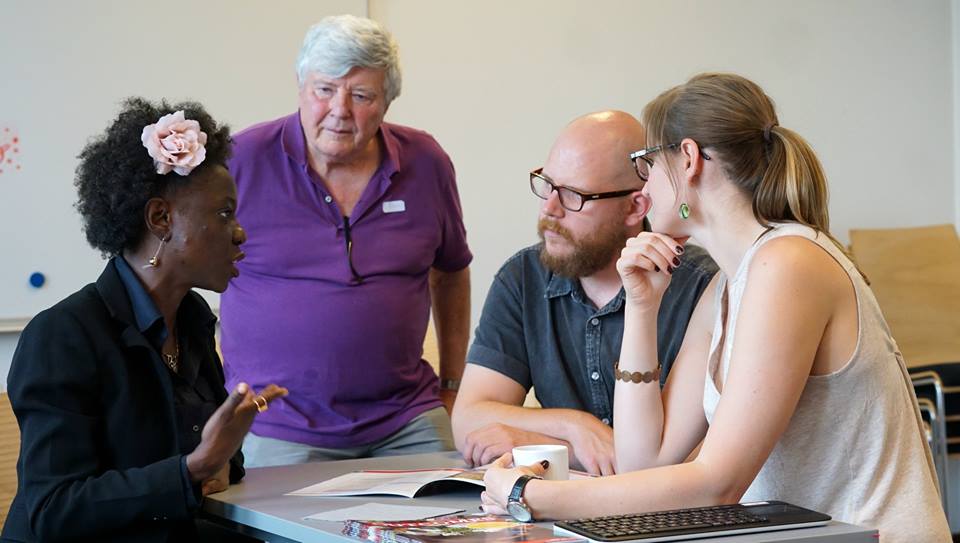In our increasingly globalized world, intercultural communication has become a vital skill, particularly in educational settings. Classrooms today are melting pots of diverse cultures, languages, and perspectives, making intercultural communication an essential component of modern education. Through this lens, QATopics explores the significance, challenges, and strategies of intercultural communication within the classroom, emphasizing its role in fostering a more inclusive and effective learning environment.
The Growing Diversity in Classrooms
As the world becomes more interconnected, schools and universities are experiencing unprecedented levels of diversity. Students from different cultural backgrounds bring unique experiences, beliefs, and learning styles to the classroom. This diversity, while enriching, also presents challenges in communication. Misunderstandings and cultural misinterpretations can arise, potentially hindering the learning process.
Recognizing and respecting cultural differences is the first step towards effective intercultural communication. Educators need to be culturally aware and sensitive, understanding that students’ backgrounds can significantly influence their approach to learning and interaction.
Benefits of Intercultural Communication
Embracing intercultural communication in the classroom has numerous benefits. It promotes empathy, respect, and understanding among students from diverse backgrounds. When students are encouraged to share their cultural perspectives, it leads to a richer, more inclusive educational experience. This environment fosters critical thinking and broadens students’ worldviews, preparing them for the culturally diverse workplaces of the future.
Moreover, intercultural communication enhances language skills and cultural literacy. In multilingual classrooms, language learning is not just about grammar and vocabulary but also about understanding the cultural context in which the language is used.
Strategies for Enhancing Intercultural Communication
To improve intercultural communication, educators can adopt various strategies. Incorporating culturally diverse materials and perspectives into the curriculum is essential. This approach not only makes learning more relatable for students from different backgrounds but also introduces all students to a wider range of cultural viewpoints.
Creating opportunities for cultural exchange and interaction within the classroom is another effective strategy. Group projects, discussions, and activities that encourage students to collaborate and share their cultural experiences can break down barriers and build mutual understanding.
Challenges and Solutions
Despite the benefits, intercultural communication in the classroom is not without challenges. Language barriers, stereotypes, and cultural misunderstandings can impede effective communication. Educators must be equipped to identify and address these issues sensitively and constructively.
Professional development programs focusing on intercultural competence can prepare teachers to handle these challenges effectively. Additionally, schools and universities can provide resources and support systems, such as language assistance and cultural sensitivity training, to facilitate better communication and understanding.
In the midst of these considerations, QATopics emphasizes the importance of creating a classroom environment that values and respects cultural diversity. This includes establishing clear communication guidelines, promoting an inclusive language policy, and addressing any form of cultural bias or discrimination promptly and effectively.
The Role of Technology in Intercultural Communication
Technology plays a pivotal role in enhancing intercultural communication in the classroom. Digital tools and platforms can bridge geographical distances, connecting students with peers and educators from around the world. Online forums, video conferencing, and collaborative projects facilitated by technology can provide students with valuable opportunities for intercultural interaction and learning.
In conclusion, intercultural communication in the classroom is an essential aspect of education in a globalized world. It enriches the learning experience, fosters mutual respect, and prepares students for the culturally diverse world they will navigate in their personal and professional lives. As highlighted by QATopics, educators play a crucial role in facilitating this communication, requiring a commitment to continuous learning and adaptation. By embracing cultural diversity and implementing effective communication strategies, the educational community can create an inclusive and dynamic learning environment where every student has the opportunity to thrive.

